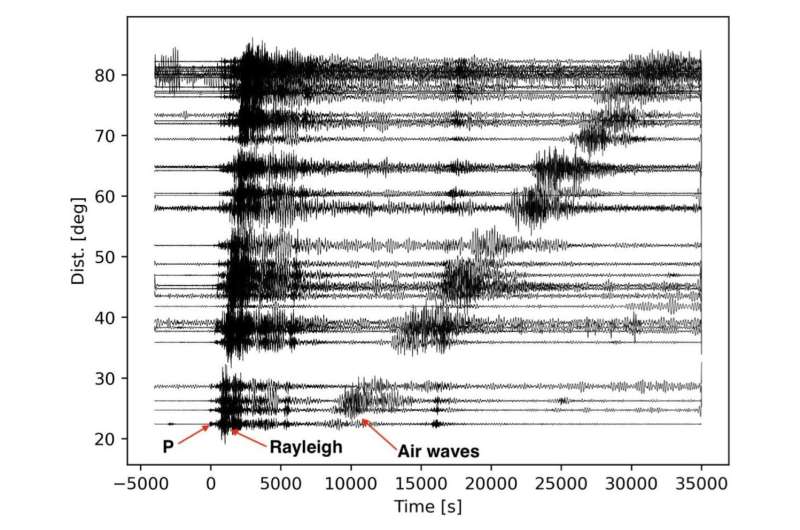Recordings of the eruption of the Hunga Tonga volcano by the stations of the global seismological network. The first 'burst' corresponds to the recording of surface seismic waves (P- and Rayleigh waves), while the later-arriving waves are due to sound waves traveling through the air (air waves). Credit: Piero Poli
On 15 January, the eruption of a submarine volcano in the Tonga archipelago destroyed 90% of the uninhabited island of Hunga Tonga Ha'apai and formed an ash plume half the size of France. It also generated an atmospheric shock wave that circled the Earth several times, and, more classically, seismic waves recorded by monitoring stations around the world.
By analyzing the seismic waves, two CNRS researchers were able to design an algorithm that can detect and locate a volcanic eruption in near real-time and, using equations that describe explosive eruptions, assess its size. Until now, such an assessment required field work and took several weeks or months, since it was necessary to estimate the volume of ash and lava produced. The authors show that the Hunga Tonga eruption ejected a volume of around 10 km3, making it the largest explosive eruption of the twenty-first century, equivalent in strength to that of the devastating eruption of Pinatubo (Philippines) in 1991. This method should make it easier to study large explosive eruptions in remote regions. Its reactivity, of the order of an hour, could help to predict the areas likely to be affected by ash, which can disrupt human activities both on the ground and in the air.
The study was published in Geophysical Research Letters.
More information: Piero Poli et al, Rapid characterization of large volcanic eruptions: measuring the impulse of the Hunga Tonga Ha'apai explosion from teleseismic waves, Geophysical Research Letters (2022). DOI: 10.1029/2022GL098123
Journal information: Geophysical Research Letters
Provided by CNRS
























